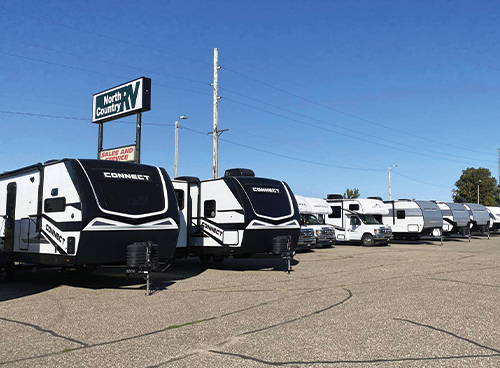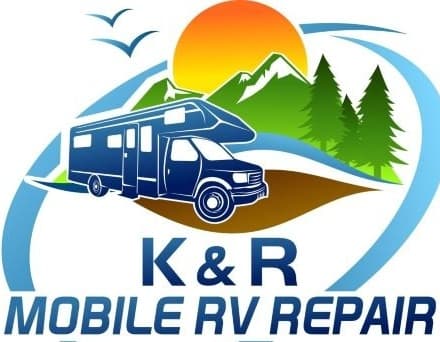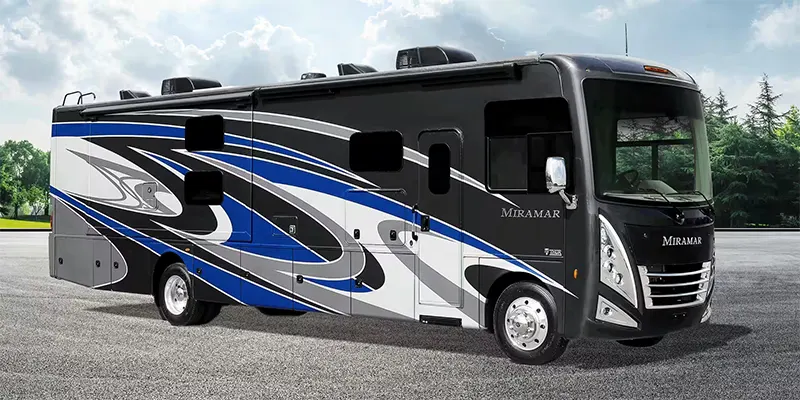All Categories
Featured
Table of Contents
- – Camper Trailer Service Near Me Foothill Ranch, CA
- – OCRV Center
- – Rv Camper Repair Near Me Foothill Ranch, CA
- – Camper Services Foothill Ranch, CA
- – Camper Trailer Service Near Me Foothill Ranch...
- – Pop Up Camper Roof Repair Foothill Ranch, CA
- – Camper Repair Near Me Foothill Ranch, CA
- – Camper Roof Replacement Foothill Ranch, CA
- – Rv Camper Ac Repair Foothill Ranch, CA
- – Camper Trailer Service Near Me Foothill Ranc...
- – Rv Camper Ac Repair Foothill Ranch, CA
- – Pop Up Camper Canvas Repair Foothill Ranch, CA
- – OCRV Center
Camper Trailer Service Near Me Foothill Ranch, CA
Valid just at taking part Outdoor camping WORLD places. See dealer for details. Federal government costs, state taxes, dealership charges and emissions screening charges as appropriate will certainly be included to conform with state vehicle codes.
We have made every effort to guarantee accuracy in the information provided. New unit photography for illustration functions just. Specs, equipment, technical data, pictures and images are based on information available at time of publishing and go through transform without notification. Stock and floorplans vary by location, not all advertised makers readily available at taking part dealerships.
Might not be incorporated with any kind of other offer and not applicable to prior sales. Offer(s) legitimate at any Outdoor camping World Motor Home Sales or FreedomRoads dealer only. See dealership for details. 2025 FreedomRoads, LLC. CAMPING WORLD and the CAMPING WORLD Logo design are registered trademarks of CWI, LLC. and used with permission.
Decision to market a Recreational vehicle regardless of price is entirely identified by the selling dealership. * Ideal deal or $1,000 - offer has to be in composing and acquired from an accredited RV dealer.
Rv Camper Repair Near Me Foothill Ranch, CA
To obtain assured trade-in worth and/or assessment, car needs to be in very same or significantly the very same problem it remained in at time of deal. All deals go through examination. $1,000 cash money will certainly be tendered in the type of cash money, check, or cash order. Not valid in LA or OR.
Consumer needs to provide legitimate buyers order authorized by management of contending dealership and correct documentation describing model year, make, brand, model, alternatives, specifications, shades, and vin # of marketed unit. Customers order legitimate for thirty day from time of compose up. Contending supplier will be any certified recreational vehicle dealership as identified by the State in which the supplier operates and is not an Outdoor Camping Globe Recreational Vehicle Sales or FreedomRoads dealership.
Not suitable to previous sales. See dealer for information. Not legitimate in California.
Camper Services Foothill Ranch, CA
The pleasant individuals at Setzer's World of Outdoor camping are pleased to offer Huntington, bringing our understanding and experience to the Tri-State area. For the most updated and extensive guidance on any type of rvs in West Virginia, Ohio, and Kentucky, you can trust the group at Setzer's. Foothill Ranch Camper Trailer Repair. As the oldest camper dealer in the area, we have actually remained in business for rather a long time, and a lot of our team have actually been with us for decades

For over 55 years as a family-owned and operated motor home dealer in Missouri, we at BT Camper Sales have actually always known that building dreams is our organization. Our commitment to excellent service and offering a remarkable choice of both new RVs up for sale and utilized Motor homes offer for sale, this is what sets us apart.
Camper Trailer Service Near Me Foothill Ranch, CA
Expense Thomas Camper Sales is an Airstream dealership continuously standing for Airstream trailers for even more than 55 years, actually BT Camper is a top seller of Airstream trailers in the Midwest. We strive to offer the ideal quality and worth for our customers at every price variety. Our varied inventory includes several of one of the most popular and versatile brand-new and previously owned RVs, such as our collection of travel trailers offer for sale, which are very easy to tow and appropriate for any kind of scenario.
Available to certified buyers based on lender credit history certifications. Valid only at getting involved CAMPING WORLD places. See dealer for information. Space where prohibited. Prices are comprehensive of all readily available discounts. Federal government fees, state taxes, dealership charges and emissions screening fees as appropriate will certainly be included to comply with state lorry codes.
Specs, tools, technical information, photographs and illustrations are based on details available at time of uploading and are subject to transform without notice. Inventory and floorplans differ by location, not all marketed makers available at participating suppliers.
Might not be integrated with any kind of various other deal and not applicable to prior sales. Offer(s) legitimate at any Camping World Motor Home Sales or FreedomRoads dealer only. See dealer for details. 2025 FreedomRoads, LLC. OUTDOOR CAMPING WORLD and the CAMPING globe Logo are registered trademarks of CWI, LLC. and made use of with approval.
Pop Up Camper Roof Repair Foothill Ranch, CA

All legal rights reserved. FreedomRoads LLC, its related dealers and innovation partners are exempt for typographical mistakes in price or errors in summary of condition of an automobile's recognized devices, accessories, rate or warranties. Any type of and all distinctions must be addressed prior to the sale of this car. Choice to sell a recreational vehicle no matter of cost is entirely determined by the marketing supplier. * Best offer or $1,000 - deal needs to be in writing and acquired from a qualified recreational vehicle dealership.
To get ensured trade-in worth and/or appraisal, car must be in exact same or considerably the very same condition it was in at time of offer. Not valid in LA or OR.
Client must present legitimate buyers order signed by administration of contending dealership and appropriate documents describing model year, make, brand name, design, alternatives, specifications, colors, and vin # of marketed device. Buyers order legitimate for one month from time of write. Contending supplier will be any type of licensed RV car dealership as identified by the State in which the supplier runs and is not a Camping Globe Motor Home Sales or FreedomRoads dealership.
Camper Repair Near Me Foothill Ranch, CA
Any kind of applicable trade-in has to be revealed and offered assessment at time of request. Not suitable to prior sales. See dealer for details. Not valid in California. Space where forbidden. For official Grand Layout motor home rebate terms, please visit .
Campgrounds might consist of a selection of centers, such as toilets, drinkable water, electrical connections, barbecue locations, waste containers, camping tent pads and team shelters. Nonetheless, lots of camping sites do not have every one of these amenities and may just have an outing table and fire ring. See to it to inspect the camping site's web site or call the proper area workplace when planning your trip.
These charges aid keep the facilities. Cost websites vary in price. Please examine the camping area's site or call the regional area workplace for information.
Pay camp charge within 30 mins of inhabiting a website. A campsite is leased just once it has actually been paid completely with the pay-stub appropriately completed and shown on site and the website is inhabited by campers. Do not leave individual residential or commercial property ignored for greater than 72 hours (or as specified at each site). As a result of unfavorable weather condition, lots of campgrounds are just seasonally readily available.
Camper Roof Replacement Foothill Ranch, CA
Not all level areas are websites. Preferably, please use existing sites to prevent developing new disruptions. To even more protect your public lands, campers need to not deal with any type of refuse, harmful materials, sewer, or in any way contaminate the surrounding location. The BLM also handles Long-Term Visitor Locations in The Golden State and Arizona, where winter months visitors may camp as much as 7 consecutive months with a permit.
The tremendous top quality built into each system, and their 2 year guarantee against problems in materials and handiwork on towables promotes itself. But if that's not what you're seeking, we additionally have a great option of high quality utilized systems offered on our great deal. So come join us in addition to the hundreds of others, as a component of the Jayco household!.
Rv Camper Ac Repair Foothill Ranch, CA
High quality, worth, and advancement are the core worths that have belonged of the Gulf Stream Coach method of operating given that it was founded in Nappanee, Indiana, by Jim Shea and his kids. Today Gulf Stream Train is the market's leading family-owned, family-operated recreational vehicle maker, encompasses 22 brands with over 140 various models all offered you by the most specialized and experienced team of associates in the market.
Making use of residential-style studs, spun fiberglass insulation, and light weight aluminum house siding for time-honored toughness and economic situation, in sizes from 20 ft. to 41 ft., our Key Line trailers are for specialized RVers who recognize what they desire and acknowledge top quality. Ideal for first-timers, value-oriented, and laid-back campers, combining economical prices with tough yet light-weight go-anywhere building.
Camper Trailer Service Near Me Foothill Ranch, CA
Campgrounds may consist of a selection of facilities, such as toilets, drinkable water, electrical connections, barbecue locations, rubbish cans, camping tent pads and team sanctuaries. Numerous camping sites do not have all of these amenities and might just have a barbecue table and fire ring. Ensure to examine the campground's internet site or call the suitable area workplace when intending your trip.
These charges assist keep the facilities. Fee sites vary in rate. Please inspect the camping area's website or call the neighborhood area workplace for details.
A campground is leased Just once it has actually been paid in full with the pay-stub effectively completed and presented on site and the website is occupied by campers. Due to damaging weather, many camping areas are only seasonally offered.
Rv Camper Ac Repair Foothill Ranch, CA
Not all level areas are websites. If feasible, please usage existing sites to stay clear of developing brand-new disruptions.
Whether you're intending to, we have everything you require to make your Recreational vehicle journey unforgettable. With over, Susquehanna Recreational vehicle is proud to be one of the. Visit us at or, and let us aid you discover the best Motor home.
No issue where you live, our or makes it straightforward to obtain your desire RV delivered right to your door anywhere in the or - Foothill Ranch Camper Trailer Repair. For over 42 years, has actually happily served campers and motor home lovers with irresistible costs,, and a commitment to outstanding solution prior to, during, and after the sale

Available to certified customers based on lending institution credit score credentials. Valid only at getting involved CAMPING WORLD places. See supplier for details. Space where banned. Rates are comprehensive of all offered discount rates. Federal government charges, state taxes, supplier costs and emissions testing fees as relevant will be included in abide with state automobile codes.
Pop Up Camper Canvas Repair Foothill Ranch, CA
We have actually striven to guarantee accuracy in the details supplied. New unit photography for picture functions just. Specs, devices, technical information, pictures and pictures are based upon information offered sometimes of publishing and go through transform without notice. Stock and floorplans vary by place, not all marketed makers offered at taking part suppliers.
OCRV Center
Address: 23281 La Palma Ave Yorba Linda, CA 92887Phone: (714) 909-1444
Email: art@ocrvcenter.com
OCRV Center
May not be integrated with any type of other offer and not relevant to previous sales. Deal(s) valid at any kind of Outdoor camping World RV Sales or FreedomRoads dealership only. See supplier for information.
Rv Camper Ac Repair Foothill Ranch, CACamper Roof Replacement Foothill Ranch, CA
Pop Up Camper Repair Foothill Ranch, CA
Camper Service And Repair Foothill Ranch, CA
Camper Repair Shops Near Me Foothill Ranch, CA
Camper Repair Shops Near Me Foothill Ranch, CA
Camping Repair Near Me Foothill Ranch, CA
Camper Trailer Service Near Me Foothill Ranch, CA
Camper Repair Foothill Ranch, CA
Camper Roof Replacement Foothill Ranch, CA
Rv Camper Ac Repair Foothill Ranch, CA
Rv Camper Ac Repair Foothill Ranch, CA
Camper Air Conditioner Repair Near Me Foothill Ranch, CA
Camper Repair Foothill Ranch, CA
Pop Up Camper Roof Replacement Foothill Ranch, CA
Camper Repair And Service Foothill Ranch, CA
Camper Service Foothill Ranch, CA
Camper Service And Repair Foothill Ranch, CA
Camper Service Center Foothill Ranch, CA
Camper Service And Repair Foothill Ranch, CA
Rv Camper Repair Near Me Foothill Ranch, CA
Pop Up Camper Repair Near Me Foothill Ranch, CA
Camper Repair Shops Near Me Foothill Ranch, CA
Camper Repair Places Near Me Foothill Ranch, CA
Camping Repair Near Me Foothill Ranch, CA
Rv Camper Ac Repair Foothill Ranch, CA
Camper Awning Replacement Foothill Ranch, CA
Camper Roof Repair Foothill Ranch, CA
Pop Up Camper Canvas Repair Foothill Ranch, CA
Camper Roof Repair Near Me Foothill Ranch, CA
Camper Repair Shops Near Me Foothill Ranch, CA
Rv Camper Ac Repair Foothill Ranch, CA
Camper Services Foothill Ranch, CA
Camper Service Foothill Ranch, CA
Camper Services Foothill Ranch, CA
Camper Repair Shop Near Me Foothill Ranch, CA
Pop Up Camper Repair Foothill Ranch, CA
Camper Trailer Repair Foothill Ranch, CA
Pop Up Camper Repair Near Me Foothill Ranch, CA
Camper Repair Shop Foothill Ranch, CA
Rv Camper Ac Repair Foothill Ranch, CA
Camper Awning Replacement Foothill Ranch, CA
Camper Service Center Foothill Ranch, CA
Camper Awning Repair Foothill Ranch, CA
Camper Repair Places Near Me Foothill Ranch, CA
Camper Repair And Service Foothill Ranch, CA
Camper Service Foothill Ranch, CA
Rv Camper Repair Foothill Ranch, CA
Camper Awning Replacement Foothill Ranch, CA
Camper Service Foothill Ranch, CA
Camper Roof Repair Near Me Foothill Ranch, CA
Camper Roof Repair Foothill Ranch, CA
Rv Camper Repair Foothill Ranch, CA
Rv Camper Repair Near Me Foothill Ranch, CA
Camper Repair Near Me Foothill Ranch, CA
Camper Repair Places Near Me Foothill Ranch, CA
Camper Roof Repair Foothill Ranch, CA
Camper Repair Shop Near Me Foothill Ranch, CA
Pop Up Camper Roof Replacement Foothill Ranch, CA
Pop Up Camper Roof Replacement Foothill Ranch, CA
Camper Service And Repair Foothill Ranch, CA
Camper Roof Repair Foothill Ranch, CA
Camper Trailer Repair Foothill Ranch, CA
Camper Services Foothill Ranch, CA
Camper Roof Repair Foothill Ranch, CA
Rv Camper Repair Foothill Ranch, CA
Camper Repair Shop Foothill Ranch, CA
Pop Up Camper Canvas Repair Foothill Ranch, CA
Camper Awning Replacement Foothill Ranch, CA
Camper Trailer Repair Near Me Foothill Ranch, CA
Camping Repair Near Me Foothill Ranch, CA
Rv Camper Repair Near Me Foothill Ranch, CA
Pop Up Camper Roof Replacement Foothill Ranch, CA
Camper Trailer Repair Near Me Foothill Ranch, CA
Camper Awning Replacement Foothill Ranch, CA
Camper Service Near Me Foothill Ranch, CA
Camper Service Center Foothill Ranch, CA
Camper Service Center Foothill Ranch, CA
Local Seo For Small Business Foothill Ranch, CA
Around Here Seo Services For Business Foothill Ranch, CA
OCRV Center
Table of Contents
- – Camper Trailer Service Near Me Foothill Ranch, CA
- – OCRV Center
- – Rv Camper Repair Near Me Foothill Ranch, CA
- – Camper Services Foothill Ranch, CA
- – Camper Trailer Service Near Me Foothill Ranch...
- – Pop Up Camper Roof Repair Foothill Ranch, CA
- – Camper Repair Near Me Foothill Ranch, CA
- – Camper Roof Replacement Foothill Ranch, CA
- – Rv Camper Ac Repair Foothill Ranch, CA
- – Camper Trailer Service Near Me Foothill Ranc...
- – Rv Camper Ac Repair Foothill Ranch, CA
- – Pop Up Camper Canvas Repair Foothill Ranch, CA
- – OCRV Center
Latest Posts
Truck Service Center La Habra
Eastvale Truck Service Center
Truck Shops Near Me Santa Ana
More
Latest Posts
Truck Service Center La Habra
Eastvale Truck Service Center
Truck Shops Near Me Santa Ana